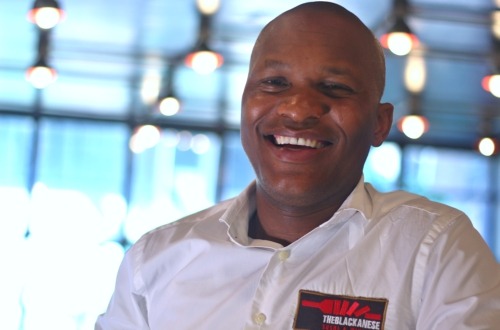
In a restaurant sector saturated with American fast food chains or traditional African offerings such as chisa nyama establishments, it was a car guard-turned-entrepreneur who turned the food culture and prevailing trends on their head.
Most people will be familiar with Vusi Kunene’s story. His story is a rags-to-riches classic that saw the Mpumalanga-born entrepreneur, who worked odd jobs including being a waiter at some of the established restaurants in the country and guarding cars at events, today running his own restaurant serving Johannesburg’s fashionable crowd in the fashionable Maboneng Precinct.
What many won’t be familiar with is the “difference strategy” Kunene adopted and the gamble he took with the launch of The Blackanese Sushi and Wine Bar in 2012 offering Japanese specialities with a distinctly African spin. Think Afro-Asian offerings like Biltong California rolls or prawn braai with Thai rice.
Kunene’s big risk in South Africa’s oversaturated and highly competitive restaurant industry is one that is paying off in a big way. Kunene has been profiled in publications such as CNN and The New York Times.
“There was a gap for history to be made, I saw an opportunity for something that had never been done before”
In an article by the New York Times Restaurant Report, Blackanese is describes as “an unexpected concept” and Kunene as “an unexpected restaurateur.”
The decision to go against the grain was a no-brainer for Kunene who says he chose the road less traveled because he didn’t want to just go into the restaurant business but he also wanted to show other African entrepreneurs the possibilities that exists.
Kunene speaks to SME South Africa about why the African-Japanese fusion was the turning point for his business and the three factors he says were the most crucial to the success of The Blackanese.
‘DIFFERENCE’ AS A STRATEGY
Standing out from the crowd – It’s great to be number one but if you are unique you are the only one. This was my thing going into this business and I was like ‘I’m going to change people’s lives through food. Because there aren’t a lot of people doing that it was easy for us to stand out.
There was a gap for history to be made, I saw an opportunity for something that had never been done before.
Making history through food – If I had gone that [African cuisine] route then I would not have made any difference in the community because I would just be selling food. I wanted to make history and to communicate the message that we can do it. It’s just our thoughts that limit us.
“South Africans are really getting into the habit of watching what they eat so we are in a very [good] position with our offering”
BIG RISKS = BIG REWARDS
The turning point – The biggest risk was being black and going into a sushi business. This was the biggest risk I have ever taken so far.
The fusion was the turning point for my business as people felt very comfortable with the ingredients they knew.
I was personally very involved in my business and educating people and it meant a lot for me to see people believing in my dream and it meant [a positive] bank balance for the business.
Keeping it real – So I did a fusion of the two cultures, Japanese with an African twist. But I had to make sure that the product very much communicates the Japanese culture, for example how the rice is prepared, and how the cuisine should be presented to customers. I came across challenges where I had to prove myself all the time and it really took a lot to educate and convince people.
Marrying Japanese with an African identity – It was actually very easy in a sense that the marriage or the fusion started from the name [The Blackanese] to the plate. I had to go with combinations that really worked well together.
BLACKANESE 3 STRATEGIES FOR GETTING IT RIGHT
The (open) secret – Quality of the food, brand positioning and the concept.
Know your market – Crazy people are my target market, people that are willing to try out crazy ideas. They made my business. I also have a huge footprint within the corporate space.
South Africans are really getting into the habit of watching what they eat so we are in a very [good] position with our offering.
Scaling the brand – We are looking at [adding] two branches this year within the country and expanding into the continent in the future. I have ventured into other hospitality spaces. We’ve just launched Slice Pizza in Cape Town, so things are looking great.


